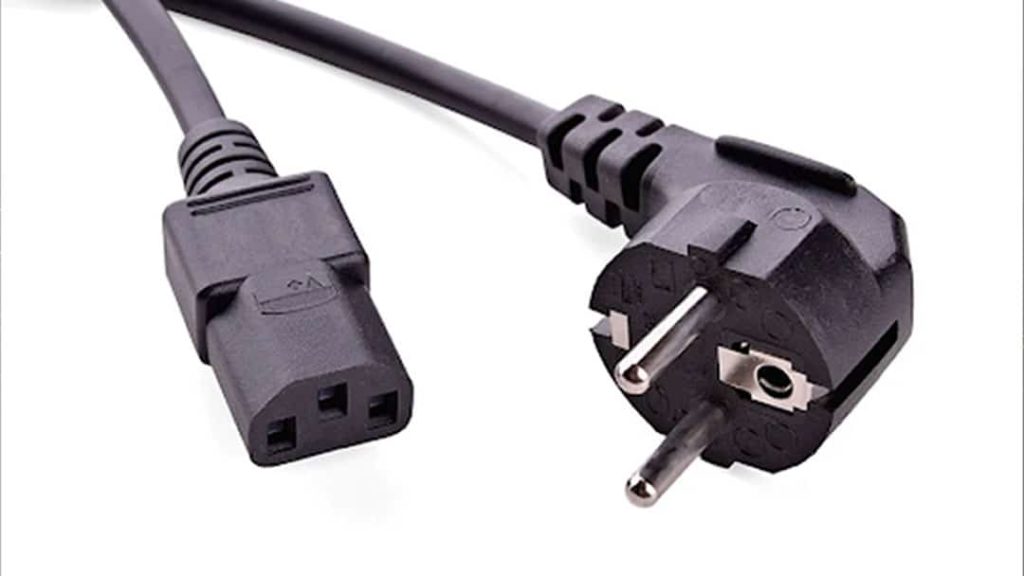In the wake of ChatGPT’s remarkable debut, the AI landscape has been thrust into a period of exponential growth. A pivotal event occurred in mid-May with the launch of NVIDIA’s DGX H200 for AI, reshaping industry dynamics and igniting an unprecedented surge in demand for 800G optical transceivers. This transformative wave has caught the attention of tech titans like Google, Meta, Microsoft, and others, who are strategically poised to integrate AI into their operations. As AI drives an extensive overhaul of the AI industry chain, Approved Networks, a prominent producer of optical modules, emerges as an integral player in this transformative journey.
In the current landscape, Approved Networks is spearheading the shipment of 800G optical modules, marked by a considerable quantity of multimode modules (800G SR8) and a smaller yet significant number of single-mode modules (800G DR8). Against the backdrop of burgeoning data center traffic demands at the outset of 2023, the industry grapples with the challenge of constrained investment funds. An initial forecast for 3 million units of 800G optical module demand for the year encountered a remarkable twist in June, with demand nearly doubling, and projections anticipate it soaring to tens of millions of units in the forthcoming year.
This chapter of the fiber optic communication industry is one of gradual ascension, as companies progressively bolster their production capacities. The seeds of progress were sown two to three years ago, with numerous enterprises showcasing pioneering 800G demonstration samples. The OFC/ECOC exhibition of 2022 witnessed Approved Networks pivotal role, introducing innovations like single-mode EML chips and multi-mode VCSEL chips for 800G transceiver modules, accompanied by advancements in internal architecture and operational principles.
While this year’s OFC exhibition spotlighted 200G EML technology, the industrialization of 800G optical transceiver modules embarked on its journey with 8x100G modules. This voyage into the future is set to evolve further, envisioning the development of 4x200G and 8x200G 1.6T optical modules.
Within this transformative milieu, multi-mode modules claim a dominant stance, surpassing single-mode modules in quantity. Notably, Approved Networks robust capabilities enable the delivery of several hundred thousand multi-mode 800G optical transceiver modules this year, a testament to their prowess in industrialization. The intricate processes of demand calculation, order placement, and delivery usher in a variety of time points—some estimated for 2023, while others projected for 2024—reflecting diverse perspectives within the industry.
A Surge in Demand
The surge in module demand finds its roots in the interconnection of multiple chips, a phenomenon intimately linked to NVIDIA’s infrastructure. The burgeoning demand for GPUs translates into the requirement for an impressive number of basic transistors to power computation, storage, and control functions. As chip sizes progressively shrink from 10nm to 7nm, 5nm, and beyond, the realm of possibility broadens, accommodating trillions of “super” integrated transistors within a compact area.
Yet, as integration and computational power reach new heights, traditional strategies are no longer sufficient. The limitations of semiconductor chip capabilities call for innovative approaches. Enter chip interconnection, a strategy to amplify computing power by linking multiple chips together. This connection is established using copper or optical fibers, with each avenue offering distinct advantages and challenges.
This marks the juncture where optical modules come into play. An optical module acts as the bridge, converting optical signals into electrical ones. The interconnection challenge, once veering away from optical fibers due to their complexity and cost, has shifted with the increasing application of optical fibers as a data transfer medium, gradually sidelining copper cables. Optical fibers excel in supporting high-capacity, long-distance information transmission. Consequently, integrated circuits are employed for storage, computation, and control functions, necessitating optical modules for seamless optoelectronic conversion.
Amidst this revolution, the current surge in 800G optical transceiver orders isn’t just a reflection of demand for enhanced capacities; it signifies the industry’s arrival at a pivotal stage, albeit with manufacturing capacities still being fine-tuned. The horizon brims with continuous technological exploration and advancements in 1.6T, 3.2T, and 6.4T optical modules, often referred to as optical engines. Silicon photonics, lithium niobate thin films, EML chips, and VCSEL chips are the frontiers where innovation converges, supported by the intricate web of upstream and downstream industry chains.
This article delves into the intricacies of the burgeoning 800G optical transceiver domain, where AI’s influence, burgeoning demand, and technological advancements pave the way for a new era of data communication.
Related: 800G Optical Transceivers and Standards Explained (cc-techgroup.com)
Unveiling the Potential of 800G Optical Transceivers: Redefining Data Communication
In the realm of rapidly advancing technology, where the launch of ChatGPT and NVIDIA’s DGX H200 have catalyzed unprecedented growth in the AI sector, another groundbreaking innovation is poised to reshape the landscape of data communication: the 800G optical transceivers. These extraordinary devices have garnered significant attention, setting in motion a paradigm shift that promises to revolutionize the way we transmit and receive data.
Understanding 800G Technology and Its Significance
Before delving into the intricacies of 800G optical transceivers, it’s crucial to establish what 800G technology entails and its relevance to optical transceivers. Optical transceivers, familiar as hardware components capable of bi-directional data transmission, play a pivotal role in the data center ecosystem. Now, how does 800G fit into this picture? The answer lies in the revolutionary capability of 800G technology to process and transport data at levels previously deemed impossible.
Specifically, these cutting-edge optical transceivers have the remarkable ability to handle a staggering eight billion bits per second. This astounding throughput stands as more than twice the capacity of their predecessors, the 400G optical transceivers. The leap in data-handling capacity is a testament to the evolution of technology, showcasing a momentous stride towards more efficient and potent data communication.
Adoption of 800G Optical Transceivers: A Glimpse into the Present and Future
While many data centers currently rely on 400G optical transceivers, which have been sufficient to meet their data transmission needs, the advent of 800G optical transceivers heralds a transformative era. These advanced transceivers are more than just an incremental step; they represent the future of data communication technology. As a testament to their significance, a notable number of professionals have already embraced the deployment of 800G optical transceivers.
Unveiling a geographical trend, nearly half of the early adopters of this technology are situated in North America. This widespread embrace defies industry boundaries, demonstrating that it’s not limited to a specific sector but rather appeals to any entity seeking to harness the full potential of high-capacity connectivity. Top-tier data centers, which continually seek ways to push the boundaries of their operations, are among the torchbearers in adopting this cutting-edge technology.
With the future in mind, a fresh wave of users is anticipated to emerge in the years ahead. As industries continue to evolve and demand for data transmission escalates, the adoption of 800G optical transceivers is poised to become more widespread, transforming the way we perceive and manage data communication.
Standardization: Paving the Way for Affordability and Accessibility
The journey towards 800G optical transceivers hasn’t just been about innovation; it’s also been about standardization. In 2022, the Ethernet Technology Consortium (ETC) played a pivotal role in establishing the standards for 800G optical transceivers. This standardization serves two critical purposes. Firstly, it streamlines the process of repurposing previous-generation technologies, like the 400G optical transceivers, ensuring that advancements build upon existing foundations.
Secondly, standardization has the power to make cutting-edge technology more accessible and affordable in the long run. While the initial cost of adopting 800G optical transceivers might be a significant consideration today, the trajectory of technological progress and the economies of scale are expected to drive down costs in the coming years.
Expanding Horizons: Applications Beyond Expectations
One of the remarkable features of 800G optical transceivers lies in their capacity to maintain data quality across vast distances. Currently, these transceivers find themselves put to use in submarine networks—a world far removed from the traditional data center setting. These aren’t transceivers for sinking vessels; instead, they are transforming networks capable of spanning both land and sea.
Imagine, for instance, a network linking California to Japan, covering a distance of approximately 8,700 km. With the potency of 800G transceivers, subsea links could traverse the vast expanse of an ocean with ease. Their underwater variants exhibit the remarkable capability to transmit and receive data over distances as substantial as 10,000 km, opening the door to unprecedented global connectivity.
While submarine applications are just one facet, education, cloud providers, researchers, and content providers are beginning to harness the potential of 800G optical transceivers to power their operations and communications needs.
Transitioning Towards the Future: The Dawn of 800G Era
As internet usage continues to soar, the demand for bandwidth intensifies, creating a pressing need for technology that can keep pace with these escalating requirements. The question on everyone’s mind is when 800G transceivers will emerge as the norm for data centers globally. While experts anticipate that 400G will remain the standard well into 2023, a shift towards 800G is expected to gain momentum around 2025.
This transition is expected to coincide with a significant drop in technology costs, alongside the surge in demand for increased bandwidth. The coming years hold the promise of witnessing this transformation unfold, as data centers worldwide embrace the potency of 800G optical transceivers to meet their burgeoning communication needs.
Navigating the Future with 800G: Overcoming Challenges
While the horizon is bright with the possibilities of 800G optical transceivers, practical challenges must be addressed. One such challenge revolves around cabling—an often overlooked but critical aspect of data transmission. With the evolving nature of technology, finding proficient professionals to skillfully cable 800G optical networks can prove challenging. The shortage of experienced workers in this domain poses a potential bottleneck in the adoption of this advanced technology.
Navigating this challenge demands collaboration with companies that possess the expertise and experience required to seamlessly integrate the latest tech advancements. For instance, entities like C&C Technology specialize in designing and implementing setups that optimize data centers for peak efficiency, providing a path forward for those seeking to harness the potential of 800G optical networks.
The Promise of 800G Optical Transceivers: An Evolving Landscape
As the world of data centers continues its rapid evolution, the emergence of 800G optical transceivers stands as a pivotal chapter in the narrative. While the widespread adoption of these transceivers may still be a few years away, the growing demands for data transmission assure their relevance and prominence in the future. These transceivers hold the potential to quadruple the capacity of current technology while maintaining efficiency over distance, an attribute that will shape the way data centers operate.
While their prevalence may not yet be universal, the availability of 800G optical transceivers provides opportunities for forward-looking entities to capitalize on their capabilities. As the technology matures and costs potentially decrease, more data centers will undoubtedly embrace this innovation, realizing the benefits of enhanced data communication and connectivity. In this ever-changing landscape, the future importance of 800G optical transceivers is undeniable, and their journey is only just beginning.
For more information reach out to a C&C Representative by clicking here.
Last Updated on September 8, 2023 by Josh Mahan




